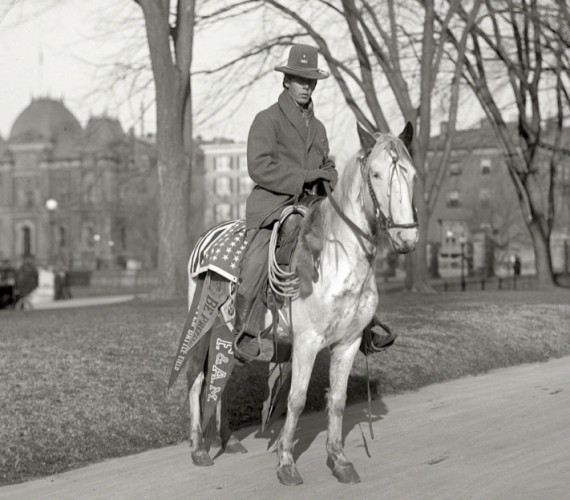From the Open-Publishing Calendar
From the Open-Publishing Newswire
Indybay Feature
2023 Native American Heritage Day - Lake Natoma Waterfront
Date:
Friday, November 24, 2023
Time:
11:30 AM
-
2:00 PM
Event Type:
Meeting
Organizer/Author:
Khubaka, Michael Harris
Email:
Phone:
279-207-9043
Location Details:
Black Miners Bar State Park
Lake Natoma District
Folsom, California
Lake Natoma District
Folsom, California
For well over several thounsands of years, California Native Americans lived along today's Lake Natoma District. Join us as we continue the journey to acknowledge authentic California History during the California Gold Rush Era and the impact upon California Native Americans.
In 1844, Honorable William Alexander Leidesdorff, Jr. obtained title to Rancho Rio De Los Americanos, over 35,000 acres along today's American River Parkway. His Mexican Land grant uniquely documented his desire not to disturb the Native American population. Leidesdorff Ranch, cattle and wheat agriculture production was at the north west of his vast property.
Maidu, Nisenan and Miwuk Nations seasonally utilized the bountiful pristine river natural flora and fauna as agriculturalists, hunters, gathers, fishing as mound builders in harmony with the land. They had a very sustainable way of life that remains valued and worthy of preservation.
In 1848, Gold was discovered along today's American River and the Historic Town of Negro Bar, Sacramento County is the earliest recorded site in today's Sacramento County. Vast sums of gold was extracted from the vast Negro Hill, Mormon Island and Negro Bar Gold Mining District.
Today, we reclaim and restore the transition years (1840-1875) while honoring the Indigenous Nations who lived from time immemorial upon this lands. California Pioneers of Pan African Ancestry have a long and cherished relationship with extended family, A'ho all my relations.
In 1914, Red Fox James, a Blackfoot Indian, sought endorsement from 24 states riding horseback along the way to support a national day recognizing and honoring Native Americans.
He presented these endorsements to the White House the following year and began the long and ongoing journey towards U.S. Government recognition and preservation of National Native American Heritage and Culture.
In 1986, the 99th Congress passed a joint resolution authorizing the President to proclaim November 23-30, 1986, as American Indian Week. President Ronald Reagan declared the first American Indian Week that year and each year following his presidency.
President George H.W. Bush continued the proclamations until 1990, when he approved a joint resolution to declare November as National American Indian Heritage Month. This tradition has continued annually. In 2008 the Native American Heritage Day Act was enacted by Congress and signed by President George W. Bush on October 8, 2008.
2023 National Native American Heritage Day continues as we help restore and reclaim the natural flora and fauna between Folsom Dam and Nimbus Dam, today's Lake Natoma.
In 1844, Honorable William Alexander Leidesdorff, Jr. obtained title to Rancho Rio De Los Americanos, over 35,000 acres along today's American River Parkway. His Mexican Land grant uniquely documented his desire not to disturb the Native American population. Leidesdorff Ranch, cattle and wheat agriculture production was at the north west of his vast property.
Maidu, Nisenan and Miwuk Nations seasonally utilized the bountiful pristine river natural flora and fauna as agriculturalists, hunters, gathers, fishing as mound builders in harmony with the land. They had a very sustainable way of life that remains valued and worthy of preservation.
In 1848, Gold was discovered along today's American River and the Historic Town of Negro Bar, Sacramento County is the earliest recorded site in today's Sacramento County. Vast sums of gold was extracted from the vast Negro Hill, Mormon Island and Negro Bar Gold Mining District.
Today, we reclaim and restore the transition years (1840-1875) while honoring the Indigenous Nations who lived from time immemorial upon this lands. California Pioneers of Pan African Ancestry have a long and cherished relationship with extended family, A'ho all my relations.
In 1914, Red Fox James, a Blackfoot Indian, sought endorsement from 24 states riding horseback along the way to support a national day recognizing and honoring Native Americans.
He presented these endorsements to the White House the following year and began the long and ongoing journey towards U.S. Government recognition and preservation of National Native American Heritage and Culture.
In 1986, the 99th Congress passed a joint resolution authorizing the President to proclaim November 23-30, 1986, as American Indian Week. President Ronald Reagan declared the first American Indian Week that year and each year following his presidency.
President George H.W. Bush continued the proclamations until 1990, when he approved a joint resolution to declare November as National American Indian Heritage Month. This tradition has continued annually. In 2008 the Native American Heritage Day Act was enacted by Congress and signed by President George W. Bush on October 8, 2008.
2023 National Native American Heritage Day continues as we help restore and reclaim the natural flora and fauna between Folsom Dam and Nimbus Dam, today's Lake Natoma.
Added to the calendar on Tue, Nov 21, 2023 2:38PM
Add Your Comments
We are 100% volunteer and depend on your participation to sustain our efforts!
Get Involved
If you'd like to help with maintaining or developing the website, contact us.
Publish
Publish your stories and upcoming events on Indybay.
Topics
More
Search Indybay's Archives
Advanced Search
►
▼
IMC Network



